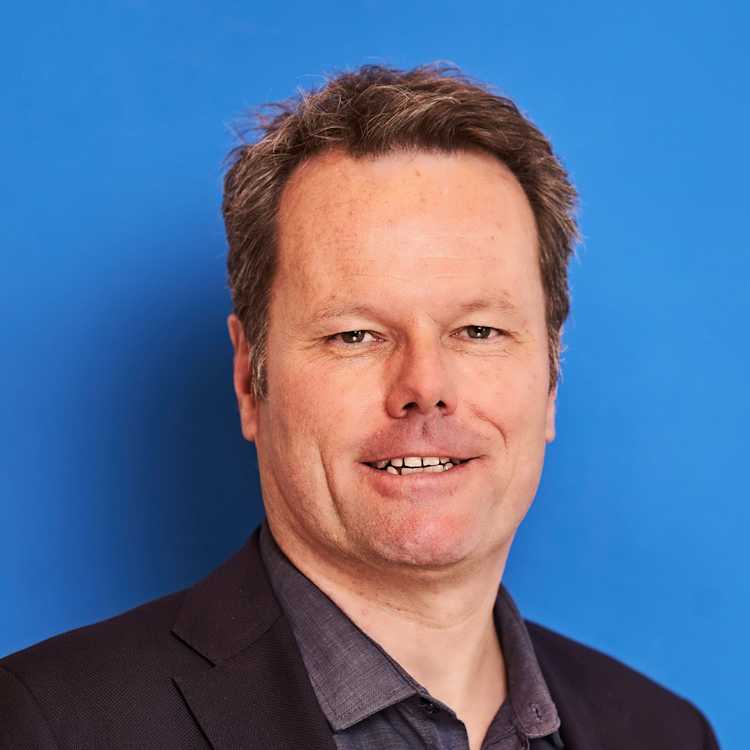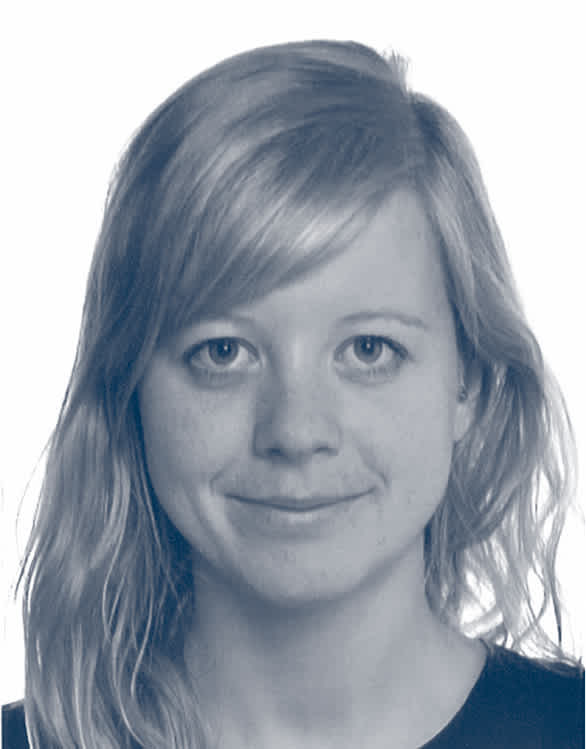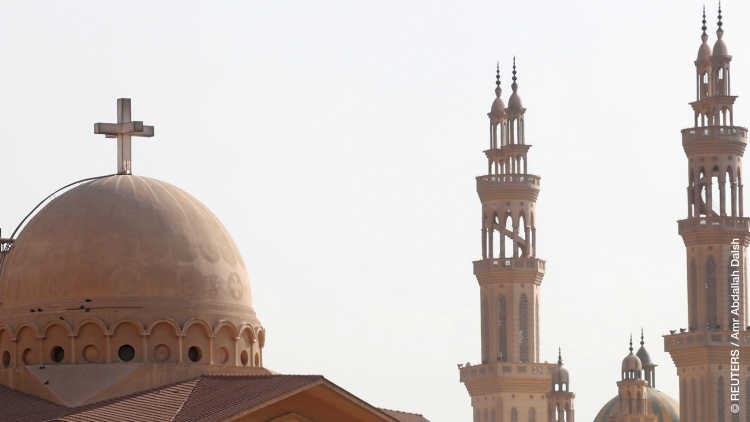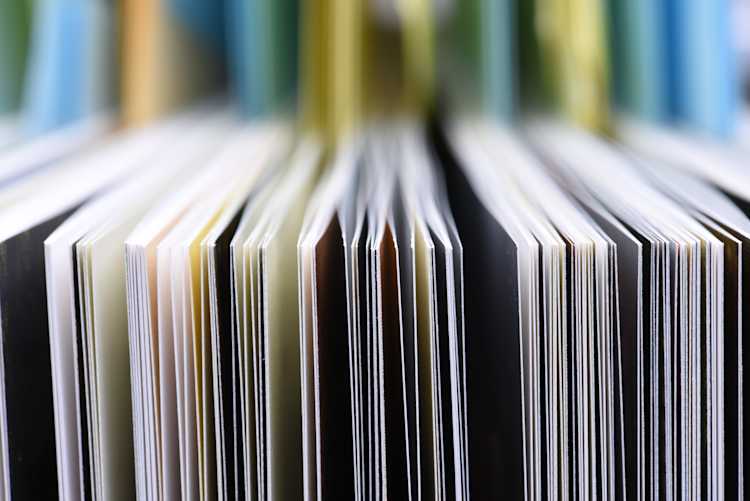- Startseite
- Publikationen
- GIGA Focus
- Syria Is Not Safe: A Look to Its Regions
GIGA Focus Nahost
Syria Is Not Safe: A Look to Its Regions
Nummer 5 | 2024 | ISSN: 1862-3611

The readmission of Syria to the Arab League in May 2023 symbolised most Arab states’ normalisation of the dictatorship under President Bashar al-Assad 12 years after the start of the civil war. With Gaza dominating the Middle East since October 2023, developments in Syria’s different regions have been largely overlooked. This is problematic given the security situation on the ground has worsened.
The Assad regime controls over 60 per cent of Syrian territory, aided by Iran and Russia. One of its primary sources of income is the illicit Captagon drug trade. Anti-Assad protests, directed against regime repression and corruption, have taken place in southeastern, Druze-dominated Suwaida since August 2023.
Northwestern Idlib, dominated by the radical-Islamist Hay’at Tahrir ash-Sham (HTS), is heavily attacked by regime and Russian air forces, leading to further population displacements. The region has also witnessed anti-HTS protests since early 2024.
The Turkish-controlled areas in northern Syria witnessed intense protests in the wake of surging violence against Syrian refugees in Turkey in July 2024. The demonstrations were exacerbated by the announcement of rapprochement efforts between Ankara and Damascus.
Northeastern Syria, the area controlled by the Kurdish-dominated Syrian Democratic Forces, has experienced an escalation of violence involving multiple actors. Local elections, initially planned for 30 May 2024, have since been postponed.
Policy Implications
The violent escalation in most of Syria and the continuation of the Assad dictatorship clearly suggest that nowhere in the country is safe. Plans to forcibly return Syrians from neighbouring countries or from Europe should as such be rejected. Instead, Germany and other European governments should condemn anti-refugee narratives and provide more humanitarian aid to Syria’s northeast and northwest.
The readmission of Syria to the Arab League on 19 May 2023 at the summit in Saudi Arabia symbolised most Arab states’ formal normalisation of relations with President Bashar al-Assad’s violent dictatorship. This came to pass 12 years after the brutal regime crackdown on the protest movement in the context of the Arab uprisings in 2011 that ushered in an internationalised civil war. Over a year after the Arab rapprochement with Assad, and with the Gaza War dominating Middle East politics since October 2023, dynamics inside Syria have been largely overlooked. This is problematic given the situation on the ground has mostly deteriorated, especially for the civilian population living in different parts of the country. To address this lacuna, an overview is provided of the most important social, political, and military developments in Syria’s different regions in 2023 and 2024: regime-controlled central, western, and southern Syria; the anti-regime, radical Islamist Hay’at Tahrir ash-Sham (HTS)-controlled northwestern Idlib; the Turkish-controlled northern territories; and, the Kurdish-controlled northeast region.
Figure 1. Overview of Actors and their Territorial Control in Syria
Figure 2. Distribution of Population and Internally Displaced Persons in Syria
Regime Areas: Dictatorship, Captagon, Suwaida Protests
As of 2024, the Assad government controls over 60 per cent of Syrian territory. This includes areas that have been under continuous regime rule throughout the war: the capital Damascus (some neighbourhoods aside), the Alawi-majority cities of Latakia and Tartus on the Mediterranean coast, and southeastern Suwaida. In addition, and together with its allies Russia, Iran, and the Lebanese Hizballah, the Assad regime by 2018/19 had also reconquered southern Dar‘a where the 2011 Syrian uprising began, the Ghouta area around Damascus, the hinterlands of central Homs and Hama, and parts of Idlib.
An estimated 9.6 million people reside in these government-controlled areas today. They live under a personalised dictatorship dominated by the Assad family, “one of the world’s most repressive regimes”. They continue to use forced disappearances, military trials, and torture on a massive scale. The regime also refuses to provide information on the fate of more than 125,000 detainees. On 15 July 2024, it held sham elections for the rubber stamping of a parliament in which pro-government Ba‘th party candidates won two-thirds of seats.
All these dictatorial practices are happening against the backdrop of substantial economic decline, as accompanied by rising unemployment (Damascus 2023: officially 37 per cent, estimations 85 per cent) (al-Jazeera 2023) and increasing poverty. Due to rampant inflation, average wages in both the private sector (approximately EUR 38 per month) and public sector (approximately EUR 16 per month) are not nearly sufficient to cover the basic cost of living (approximately EUR 595 per month for a family of five; all figures for January 2024) (al-Jazeera 2024). For most Syrians in regime territories, livelihood conditions are now much worse than at any other time during the war.
Fundamental to this malaise is the systemic corruption of Syria’s state bureaucracy: essentially all resources and services – if even made available – are distributed based on personal loyalties and social ties. Since 2019/20, a number of additional developments have worsened the socio-economic situation in regime-controlled territories: First, the collapse of the Lebanese economy since 2019 has led to drastic currency devaluations because central and western Syria are intricately linked to Lebanon when it comes to banking and financial transfers. Second, per the 2019 US Caesar Act with its focus on “secondary sanctions,” companies from third countries have been forced to massively curtail their trade with Syria in recent years. Crucially also, the Assad regime’s two main donors have provided much less economic and military aid to Syria of late: Russia has needed to finance its war on Ukraine since 2022 and Iran has had to respond to harsher Western sanctions and economic decline at home.
The most important way in which Assad and his cronies have garnered substantial income in consequence is via the massive expansion of the production and export of Captagon, an amphetamine-type synthetic stimulant (Rose and Shaar 2024). Initially developed as easy-to-produce pills for Syrian fighters, Captagon manufacturing since 2015 has mainly been directed towards export, typically from southern Syria via Jordan and to the resource-rich Gulf countries of Saudi Arabia and the United Arab Emirates. Over time, further routes have been established: northwards via Turkey and towards Central Europe, southwest towards the Horn of Africa (Rose and Shaar 2024). In addition, there are indications of a transit route to Germany too, including via the Port of Hamburg, from where the drug is then exported to Saudi Arabia with German customs clearance. Maher al-Assad, the president’s brother, and other Syrian intelligence barons are allegedly the main profiteers from the booming Captagon trade, collaborating with smugglers along the Syrian–Jordanian border. In the context of Syrian–Arab normalisation since 2023, curtailing Captagon smuggling remains a major issue – especially for Jordan and Saudi Arabia. Even though these countries have implemented drastic counternarcotics measures – with Jordan, for instance, attacking smugglers and bombing drug factories in southern Syria –, the Assad regime’s export of Captagon seems to continue unabated.
Since mid-August 2023, those living in the southeastern province of Suwaida have been protesting regime repression, corruption, a lack of socio-economic prospects, and rising drug smuggling. Most protesters are Druze, a religious-minority sect that combines doctrinal elements from Shi’a Islam and Christianity. The emergence and continuation of the protest movement are remarkable because Suwaida would be among the calmest regions during the Syrian uprising in 2011 and the ensuing war. Akin to other religious minorities in Syria, the Druze remained acquiescent to Assad who, as an Alawi (another minority sect drawing on, among other things, elements of Shi‘a Islam), attempted to portray himself and the regime overall as the best protector of Syria’s non-Sunni Muslim minorities. Worried that a massive clampdown on the Druze might not only backfire but also inspire other minorities in Syria to initiate their own anti-Assad demonstrations, the regime initially held back, refraining from employing its usually harsh repression against their expressed discontent. Slowly but steadily, regime policing of the Suwaida protests has become much more brutal. This escalation left 47 dead in the period between mid-June to mid-July 2024 alone (Lister 2024). The culmination of this intensifying violence was the killing of Druze activist and militia leader Murhij al-Jarmani on 17 July 2024. Still, protests in Suwaida have since continued, underlining that the regime has lost partial control over Syria’s southern territories.
Northwestern Idlib: Precarity, Regime Attacks, and Resistance to Hay’at Tahrir ash-Sham Rule
Idlib in northwestern Syria is a relatively small area home to over three million residents. Livelihoods depend almost entirely on the external aid provided by the United Nations, primarily via the Bab al-Hawa crossing on the border with Turkey. More than 80 per cent do not have sufficient access to drinking water, sanitary facilities, and waste treatment, increasing the likelihood of infectious diseases spreading (Watad 2024). Around 1.7 million people in Idlib are internally displaced persons (IDPs), having fled other parts of Syria during the course of the war. According to the UN’s Office for the Coordination of Humanitarian Affairs (OCHA), 700,000 of Idlib’s IDPs live in camps. There, the situation is even more precarious than for other, non-camp IDPs: over 90 per cent of the camp inhabitants are malnourished, including more than 100,000 children and mothers (Haid 2024).
The already life-threatening situation for most people in Idlib further worsened with the massive earthquake that hit parts of the region in spreading out from its epicentre in Turkey on 6 February 2023, leaving circa 4,500 dead and over 200,000 homeless. While international donors provided emergency aid to Idlib and committed to continuous funding, such as during the European Union-led Brussels VIII donor conference in May 2024, the de facto humanitarian assistance coming into Idlib has clearly remained insufficient. This decrease in material support arriving in general, alongside the mismanagement of these limited aid packages in particular, have further endangered the survival of most of those living in Idlib, leaving them in permanent limbo between life and death (Haid 2024).
After a period of relative calm following a Russian–Turkish truce in March 2020, joint Assad regime and Russian air force attacks on Idlib, the last remaining rebel stronghold, started again in 2022 into 2023. They targeted the southern and eastern parts of the region and slowly but surely increased their territorial gains. The Gaza War occurring in the wake of 7 October 2023 has provided the Assad regime and the Russians with an opportunity to drastically escalate their bombing campaign on Idlib since the world’s attention is elsewhere: from early October to December 2023, some 160,000 people in Idlib were internally displaced, often for the second or third time, leading to a further deterioration in what was already a precarious living situation. These attacks on Idlib have since continued.
Politically and militarily, northwestern Idlib has been dominated by the Sunni Islamist HTS, which governs through the so-called Syrian Salvation Government. Originally a radical-Jihadist organisation linked to al-Qa’ida, HTS focused on fighting both the Assad regime and the Islamic State in Syria and ash-Sham (ISIS) and attempted to consolidate its dominance over Idlib, either by fighting other rebel factions or by incorporating them into its ranks. Under the leadership of Abu Muhammad al-Jolani, HTS has since 2017 gradually toned down its ideology, in part to appease external actors – including Western governments. At the same time, Jolani has established a personalist-authoritarian, clientelist regime and consolidated his rule also by detaining former collaborators. The increasing persecution of former allies, their arrest, torture, and, in some cases, murder, combined with the dire economic situation, has led to the emergence of internal strife and therewith an anti-HTS protest movement active since February 2024 (Ajjoub 2024). These protests have been a challenge to the standing of Jolani and the HTS in Idlib. At the same time, the northwestern Idlib region has also seen renewed protests in 2023 and 2024 in the tradition of the initial Syrian uprising.
Turkey-Occupied North: Human Rights Abuses and Fears of Turkish–Syrian Rapprochement
In northern Syria, Turkey has been occupying territory in line with its own interests too. This results from three military interventions: First, OperationEuphrates Shield from August 2016 to March 2017 saw the conquest of the area from A’zaz to Jarablus, including al-Bab. Second, Operation Olive Branch from January to March 2018 widened Turkish control to the area around Afrin. Third, Operation Peace Spring in October 2019 led to the seizure of the area from Ras al-‘Ain to Tell Abyad. Ankara’s primary motivation for those incursions was to combat the influence of Kurdish groups based in northern Syria. The violence thus disproportionally affected the Kurdish population resident in said territories. Locally, rule is exerted via Turkey’s backing of the so-called Syrian National Army (SNA) and its allied factions. The Syrian Interim Government is supposed to serve as an independent political body yet is also subordinate to Turkey.
The comparatively small size of the Turkish-controlled land corridors should not be confused with their insignificance, either demographically or in terms of infrastructure. Instead, the areas are very densely populated with resident numbers even having increased due to the continuous arrival of IDPs, either from other parts of Syria or through forced repatriations from Turkey. About 2.1 million people, almost half of whom are IDPs, live in these Turkish-held territories. Moreover, the areas encompass border crossings invaluable to the flow of goods and aid.
International humanitarian assistance – for instance, from the World Food Programme – has, however, diminished over time, leaving people suffering the consequences. In addition, many civilians have experienced the expropriation and confiscation of property at the hands of the SNA. The latter and the Turkish army have both been responsible for drastic human rights violations, including abductions, arbitrary arrests, unlawful detentions (also of children), sexual violence, and torture (HRW 2024). These areas are further burdened by a chronic shortage of medical staff, adversely impacting health, particularly that of women and children, as well as rendering medical aid extremely costly. Infrastructural deficiencies include malfunctioning sewage systems, aggravating the dangers of the spread of disease, electricity outages, and insufficient water provision, thus adding also to the threat of a looming food crisis.
This humanitarian disaster could further worsen if more Syrian refugees are forcibly deported to these areas from Turkey. More than 6,400 people suffered such a fate in the first quarter of 2024 alone (Ibrahim, al-Jeratli, and Hamoud 2024). As a side note, Lebanon has also engaged in such forced deportations. From the Turkish viewpoint, this practice could intensify as signs of a Syrian–Turkish rapprochement have been on the horizon since early summer 2024, with both Recep Tayyip Erdoğan and Assad declaring their willingness to mend ties. The “Syrian refugee question” would be central to such negotiations.
Anti-Syrian rhetoric has increased in Turkey, resulting in violent protests – even pogroms – against Syrian refugees in June 2024, leaving eight dead and dozens injured. As a direct reaction, those living in the Turkish-occupied territories of northern Syria protested both the apparent rapprochement between Ankara and Damascus and the Turkish occupation on the ground, demanding not only improved living conditions but also the fair, equal treatment of Syrian refugees in their neighbouring country. The demonstrations in northern Syria were forcibly suppressed, with at least five people killed. The prospect of a Syrian–Turkish rapprochement once again leaves the civilian population in northern Syria subject to tremendous insecurity.
Northeast: Kurdish–Turkish and Kurdish–Arab Conflicts
In northeastern Syria – an area of approximately 50,000 square kilometres home to about 2.5 million people, including 402,000 IDPs –, governance is led by the Autonomous Administration of Northeastern Syria (AANES). Politically, the AANES is influenced by the Democratic Union Party (PYD) that maintains close ties with the Kurdistan Workers’ Party (PKK). Militarily, the region is predominantly controlled by the Syrian Democratic Forces (SDF), a coalition led primarily by the People’s Protection Units (YPG), the PYD’s armed wing.
Although SDF members hail from diverse ethnic and family backgrounds, the coalition is frequently characterised as “Kurdish” due to the dominant forces within its ranks. It has received considerable support from the United States as part of joint efforts to combat ISIS, which, in turn, has seen the North American country gain significant influence in the region. Currently, circa 900 US special forces are stationed in the area, especially near oil fields – for example, those located in the vicinity of Shadadi. Since the onset of the latest Gaza War, these bases have experienced increased attacks from Iran and Iranian-aligned militias, exacerbating the already tense security situation.
Northeastern Syria has been further destabilised by violent conflict involving Turkey. The latter perceives the Kurdish-led SDF forces to be allied with the PKK, which Ankara deems a terrorist organisation. In the second half of 2023 alone, Turkish–Kurdish skirmishes have left 750 dead in the region (Enab Baladi 2024). Regular Turkish drone attacks have severely disrupted and destroyed essential infrastructure in the area. In January 2024, for instance, one million people were left without electricity and two million without access to clean water (Zayadin 2024). In addition to the conflict with Turkey, the SDF is also engaged in regular combat with both the Syrian army and pro-Iranian Shi’a militias.
A further challenge to the SDF’s rule in northeastern Syria stems from the armed resistance of Arab tribes, particularly in the area of Deir ez-Zor. They are reportedly supported by pro-Iranian forces who exploit anti-Kurdish sentiment among the Arab population. Kurdish–Arab tribal clashes escalated in the summer of 2023, leaving at least 90 people dead (Gritten 2023). In August 2024, tensions have reignited, raising concerns of further escalation.
These multiple violent conflicts have led the SDF to increase its repression against political opponents. Relatedly, it faces allegations of forced recruitment (including of children), extrajudicial killings, and arbitrary arrests, as well as torture in its detention facilities. These transgressions and the ongoing lack of socio-economic prospects have precipitated a massive outflow of the local populace. Estimations suggest, indeed, that as many as 200,000 people have fled these territories since 2020 (Netjes 2024).
Another significant security concern in the region is (former) ISIS fighters who live in camps scattered across these Kurdish-dominated territories. These sites are deemed “ticking time bombs” as ISIS’s ideology – and thus the potential for violence – lives on through them. Some 10,000 ISIS prisoners are held in northeastern Syria, in addition to which there are their total 45,000 family members (Salih 2024). Alongside the daily plight of those living in these camps, human rights violations at the hands of the SDF, including murder and torture, have been reported. Despite ISIS being largely confined to the camps, remnants of the terrorist group continue to roam at large within these territories, with their activities increasing – as leading to more than 120 casualties in March 2024 alone (Salih 2024).
Amid this multiplexity of security threats, local elections were set to take place in the AANES territories in August 2024, having been twice postponed (originally 30 May 2024, then 11 June 2024) on the grounds of internal difficulties, such as the failure to deliver polling cards to all eligible voters. Postponing the elections has hence been supported by several Kurdish parties set to participate in them – and by the US. Turkey has, furthermore, threatened to invade should the elections proceed as planned. Despite this, AANES has maintained that holding municipal elections complies with UN requirements. Yet, it lacks time to properly prepare (Muhammad 2024).
The news of potential rapprochement between Turkey and Syria further compounds the pressure on AANES and the SDF. Without question, the Kurdish territories will play a significant role in potential Syrian–Turkish talks. With Turkey wanting to curb Kurdish influence near its borders and the Assad regime aiming to expand its territorial control within Syria, SDF rule in northeastern Syria finds itself on even shakier ground. The best option for the SDF in an Ankara–Damascus rapprochement scenario would be to retain some autonomy while being integrated into the wider governance context within Syria. This, however, is unlikely without the US – and the latter’s involvement heavily depends on the outcome of its own upcoming presidential elections in November 2024.
Policy Implications
The escalation of violence across most of Syria and the continuation of the Assad dictatorship suggest that nowhere in the country is safe. In regime areas, the local population face Assad’s brutal repression, continued corruption, and an unprecedented socio-economic crisis. Northwestern Idlib is confronted with the prospects of a humanitarian catastrophe should aid delivery further diminish. In addition, the joint Syrian government and Russian bombardment and the HTS’s internal power struggle render an already precarious situation life-threatening. In Turkish-occupied northern Syria, human rights abuses against the local, predominantly Kurdish population are rampant. A further influx of Syrians forcibly deported from Turkey would gravely exacerbate the already difficult conditions on the ground. The Kurdish-controlled northeast is experiencing worsening violence, as involving multiple local, regional, and international actors.
Given the highly insecure situation in all parts of the country, any plans to forcibly return Syrian refugees should be openly rejected. This should include convicted or alleged felons, a prospect that has, for instance, been raised in Germany following the Solingen terrorist attack on 23 August 2024. On the European level, this means countering the moves by the Austrian, Cypriot, Czech, Greek, Italian, Maltese, and Polish governments from June 2024 to declare parts of Syria “safe,” which could be the starting point for the forced return of Syrians to their native country. Further, Germany and other European governments should pressure Syria’s neighbours, especially Lebanon and Turkey, to stop the ongoing repatriation of Syrians against their will. Rather, they should continue supporting Syrians’ host communities in these respective Middle Eastern countries. Finally, Germany and its European peers should increase their humanitarian aid to Syria’s northwest and northeast, working with local partners to find ways to reach those civilians most in need.
Acknowledgement
The authors thank Eduardo Valencia for developing the interactive map as well as Christiane Fröhlich and Regine Schwab for their helpful critiques of the manuscript.
Fußnoten
Literatur
Ajjoub, Orwa (2024), Crossroads in Idlib: HTS Navigating Internal Divisions Amid Popular Discontent, Middle East Institute, 13 May, accessed 29 August 2024.
al-Jazeera (2024), sūriya.. šallal iqtaṣādī wal-qaṭāʿ al-ḫāṣ yusraḥ al-mūẓfīn, 5 June, accessed 29 August 2024.
al-Jazeera (2023), al-maǧāʿ tuṭal bi-rʾāsha.. as-sūrīyūn yarzaḥūn taḥt waṭʾā al-ʾasʿār, 15 January, accessed 29 August 2024.
Enab Baladi (2024), Turkey Targets SDF Areas in Northern Syria,10 August, accessed 29 August 2024.
Gritten, David (2023), Syria: Dozens Killed in Fighting between SDF and Arab Tribesmen, in: BBC News, 5 September, accessed 29 August 2024.
Haid, Haid (2024), Cutting Lifelines: How Humanitarian Aid Reductions Threaten Survival in Northwest Syria, The Tahrir Institute for Middle East Policy, 23 May, accessed 29 August 2024.
HRW (Human Rights Watch) (2024), Syria: Abuses, Impunity in Turkish-Occupied Territories, 29 February, accessed 29 August 2024.
Ibrahim, Hassan, Khaled al-Jeratli, and Reem Hamoud (2024), Deportation of Syrians from Turkey: From Election Card to State Approach, in: Enab Baladi, 7 May, accessed 29 August 2024.
Lister, Charles (2024), Another Uprising Has Started in Syria, in: Foreign Policy, 18 July, accessed 29 August 2024.
Muhammad, Sozdar (2024), The War Over AANES Municipal Elections in Northeastern Syria, Syria Direct, 11 June, accessed 29 August 2024.
Netjes, Rena (2024), The Silent Exodus from Northeast Syria, Carnegie Endowment for Democracy, 19 March, accessed 29 August 2024.
Rose, Caroline, and Karam Shaar (2024), The Captagon Trade from 2015 to 2023, New Lines Institute, 30 May, accessed 29 August 2024.
Salih, Mohammed A. (2024), US Policy in Northeast Syria: Toward a Strategic Reconfiguration, Foreign Policy Research Institute, 6 May, accessed 29 August 2024.
Watad, Aaref (2024), Water Shortages Worsen as Funding Dries Up for Northwest Syria Displaced, Al-Monitor, 10 July, accessed 29 August 2024.
Zayadin, Hiba (2024), Türkiye’s Strikes Wreak Havoc on Northeast Syria, Human RightsWatch, 9 Feburary, accessed 29 August 2024.
Redaktion GIGA Focus Nahost
Lektorat GIGA Focus Nahost
Regionalinstitute
Forschungsschwerpunkte
Wie man diesen Artikel zitiert
Bank, André, und Ronja Herrschner (2024), Syria Is Not Safe: A Look to Its Regions, GIGA Focus Nahost, 5, Hamburg: German Institute for Global and Area Studies (GIGA), https://doi.org/10.57671/gfme-24052
Impressum
Der GIGA Focus ist eine Open-Access-Publikation. Sie kann kostenfrei im Internet gelesen und heruntergeladen werden unter www.giga-hamburg.de/de/publikationen/giga-focus und darf gemäß den Bedingungen der Creative-Commons-Lizenz Attribution-No Derivative Works 3.0 frei vervielfältigt, verbreitet und öffentlich zugänglich gemacht werden. Dies umfasst insbesondere: korrekte Angabe der Erstveröffentlichung als GIGA Focus, keine Bearbeitung oder Kürzung.
Das German Institute for Global and Area Studies (GIGA) – Leibniz-Institut für Globale und Regionale Studien in Hamburg gibt Focus-Reihen zu Afrika, Asien, Lateinamerika, Nahost und zu globalen Fragen heraus. Der GIGA Focus wird vom GIGA redaktionell gestaltet. Die vertretenen Auffassungen stellen die der Autorinnen und Autoren und nicht unbedingt die des Instituts dar. Die Verfassenden sind für den Inhalt ihrer Beiträge verantwortlich. Irrtümer und Auslassungen bleiben vorbehalten. Das GIGA und die Autorinnen und Autoren haften nicht für Richtigkeit und Vollständigkeit oder für Konsequenzen, die sich aus der Nutzung der bereitgestellten Informationen ergeben.



















































